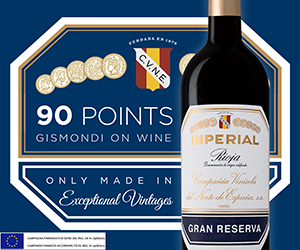Believe it or not, it's been 46 years since Robert Mondavi began popularizing the notion of drinking varietal wine, in essence striking a blow for simplicity in wine consumption.

Mondavi and a handful of New World contemporaries focused on a series of single grape varieties catapulting "varietal wine" to near cult status in wine stores across the nation.
As mentioned, it wasn't only America that was busy searching for the flavour of the month. Australia, Spain, Chile, Italy, South Africa, Argentina and, more recently, Canada have all had their moments. In fact, each has played an important role in tinkering with the style of wine we all drink today. But there's more to wine than simply solo grape offerings, and as the wine world matures both at the winery and in your home, there is a strong pull toward the notion of blended wine.
The art of blending is hardly new. It has been happening for centuries, inspired no doubt by the first grower to lose an entire crop of Merlot or Cabernet Sauvignon or Syrah to a natural disaster.
Winegrowers today blend grapes to reduce that risk, and in many cases make a wine that is superior to its mono-varietal cousins. Blending can increase complexity and balance and often, more practically, cover up faults as they relate to individual varieties or vintages -- smoothing out edges, softening tannins, taming bitter notes and much more. In the end, blending is akin to riffing on the notion that the whole is greater than the sum of the parts.
Blended wine, once incomprehensible to the average consumer, is a concept more easily embraced as we step past the mono-varietal world into the depth and complexity of a blended wine universe. Thus the comeback, so to speak, of Rioja, (made with Tempranillo, Graciano, and Mazuelo) and new Spanish blends involving Grenache, Cabernet and Tempranillo. The return of Bordeaux and its imitators made with ever sophisticated varying mixes of Cabernet Sauvignon, Merlot, Cabernet Franc, Malbec and Petit Verdot and even Carmenère) or Châteauneuf-du-Pape and its Syrah, Grenache, Mourvèdre, Counoise, Cinsault grapes that can be joined by as many as eight other varieties -- some that are white. All these blends point toward a certain acceptance by consumers to explore another style of wine, namely crafted by mixing different but compatible grapes.
Nowhere is the rush to blend more advanced than when the key ingredient is Cabernet Sauvignon. Seemingly born to be blended, Cabernet sports a trio of admirable attributes: colour, tannin and acid. It is these characteristics that give it the ability to be softened with the likes of Merlot and/or Cabernet Franc as is the case in Bordeaux, or to be used as a hardener to firm up the soft underbelly of grapes like Merlot, or Australian Shiraz or Spain's Tempranillo. The other aspect to blending is its ability to stretch a scarce resource while at the same time keeping shelf prices reasonable.
Here in B.C., the red blend may well be the saviour of the Okanagan at least until global warming makes us more like California and less like Germany. Cabernet Sauvignon and Cabernet Franc remain persistently challenging to ripen and bottle on their own, but when blended with riper Merlot, Syrah or Grenache, they appear to build a better wine than ever seemed possible.
You could argue that all wines are blends if you are mixing clones and rootstocks or vineyards or even single blocks as Pinot Noir producers do but there is something even more mysterious about blending two or more grapes that can add complexity to an otherwise generic wine.
Over the next decade there is little doubt that the concept of blending wines both red and white will grow. As we come to accept blends as normal, it will eventually take the emphasis off the grapes
Longue-Dog Grenache Syrah 2010, Vin de Pays d'Oc, France
Price $12 | Score: 87/100
UPC: 3430560002560
Love those Paul Boutinot reds from the south of France. The 2010 is a mix of Grenache and Syrah with plenty of juicy, black raspberry fruit flecked with pepper throughout. The finish is soft and supple but the wine is hyper tasty and highly affordable. Try this with a rich pasta Bolognese or plain old hamburgers. Good value.
St. Hallett Poacher's Semillon Sauvignon 2010, Barossa Valley, South Australia
Price $15 | Score: 87/100
UPC: 9316920000329
A classic Semillon Sauvignon Blanc blend. Love the nettle, guava, green lime, tropical fruit nose with bits of asparagus that spill onto the palate. The attack is dry and elegant with more fresh grassy, floral, nutty honey fruit. Perfect for West Coast shellfish or oysters. Great value all under screw cap.
Ogier Côtes du Rhône Heritages Blanc 2011, Rhone Valley, France
Price $17 | Score: 88/100
UPC: 00714320135501
Similar to the 2010, this classic white Rhone offers up a floral, aromatic mix of peachy, lemon, ginger aromas flecked with almonds and chalk. The attack is fresh and juicy with more lime rind, honey, ginger, apple skin and lemon flavours. A fine, inexpensive Châteauneuf-du-Pape. Perfect with seafood.
Zonin Ripasso Valpolicella Superiore 2010, Pedemonte Valpolicella, Veneto, Italy
Price $19 | Score: 88/100
UPC: 008002235023771
The Zonin "ripasso" opens with a full, soft, rich palate thanks to its secondary ferment on dry Amarone skins. The nose is expressive offering licorice, cocoa and coffee notes with black fruits. The attack is similar with more cherries and chocolate fairly pliable, soft tannins. Try this with fresh pasta and your favourite meat sauce. The bend is 70/20/10 Corvina (including Corvinone), Rondinella and Molinara.
Hollick Cabernet Sauvignon Merlot Tannery Block 2008, Coonawarra, South Australia
Price $25 | Score: 89/100
UPC: 009315867031908
Big cassis jam, blackberry, coffee, minty, vanilla, cedar, black olive, smoky vanilla, licorice aromas. Ripe, round, smooth, fresh palate with light tannins. Coffee, vanilla, savoury, peppery, cassis, black cherry, resin, tobacco, mint chocolate flavours. Good fruit and concentration, but the acidity and warmth dry out the finish. Best with grilled beef.
Boutinot La Cote Sauvage Cairanne Cotes du Rhone Villages 2009, Rhone Valley, France
Price $30 | Score: 91/100
UPC: 003430560001549
Expect a gamy, meaty, smoky, blackberry nose with bits of resin, licorice, dried thyme, vanilla and chocolate aromas. A wonderful mix of dry, round, juicy blackberry, black cherry fruit with fig, peppery, garrigue, coffee, cardamom, smoky, savoury flavours. Good intensity and concentration, will improve over the next one to three years. Great with any intense fall or winter fare.

 quicksearch
quicksearch





